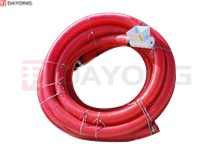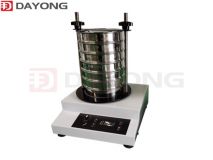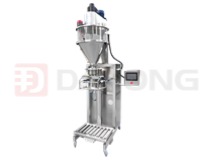Application of screening and crushing equipment in iron oxide preparation
2023-03-31 09:22:15
It can produce high-quality iron oxide red products. The technology has low investment, quick effect and broad market prospect, and is especially suitable for the production of small and medium-sized enterprises. As a manufacturer of grinding equipment, Xinxiang DaYong can provide a full set of equipment for this technology, which is characterized by simple process, short process and strong continuity, and can meet the requirements of industrial production with high output and low cost. The product has the advantages of high purity, fine particle size and narrow particle size distribution. Today, I will explain the steps of producing ferric oxide red from iron concentrate powder and what grinders are required, respectively.
A. Pass the iron concentrate through 60 mesh rotary vibrating screen for screening;
B. Use Raymond machine to grind iron concentrate powder, and its particle size shall be controlled within - 800~1200 meshes;
C. The milled iron concentrate powder is subject to multi-stage magnetic separation with magnetic separation column in series to further separate non-ferrous substances. The magnetic field intensity is 2~14KA/m, the total iron content is ≥ 70%, and the water content is<5%;
D. Rotary double-layer drying furnace is used for drying. The drying temperature is 350~650 ℃, and the water content is less than 0.5%;
E. Fine grinding with ultra-fine vertical mill, with the average particle size of mineral powder controlled at 8-12 μ m;
F. Enter the rotary baking furnace for baking treatment, and strengthen the blowing at the same time. When the temperature of waste gas at the furnace tail is less than 400 ℃, it will be discharged into the atmosphere through two cyclone separators in series, bag filter and water curtain, and the heated air will enter the enhanced blast system;
G. After oxygen roasting, the transformed iron oxide red powder is cooled by water-cooled chute, screened by rotary vibrating screen, and then enters the supersonic superfine airflow crushing classifier. The superfine crushing and grading are carried out continuously, and the average particle size of the product is controlled to be 0.1~4 μ m. The production process of fine powder is completed through magnetic separation and packaging.





 (Live chat)
(Live chat)

_213x160.jpg)



 +86-373-3669005
+86-373-3669005 laura@vibratingscreen.cc
laura@vibratingscreen.cc +86-373-3669006
+86-373-3669006 From West Room 5, 1st Floor, Building 18, Huilong Yangguang Mingyuan, New District, Xinxiang, Henan, China (Mainland).
From West Room 5, 1st Floor, Building 18, Huilong Yangguang Mingyuan, New District, Xinxiang, Henan, China (Mainland). Your Position:
Your Position:


